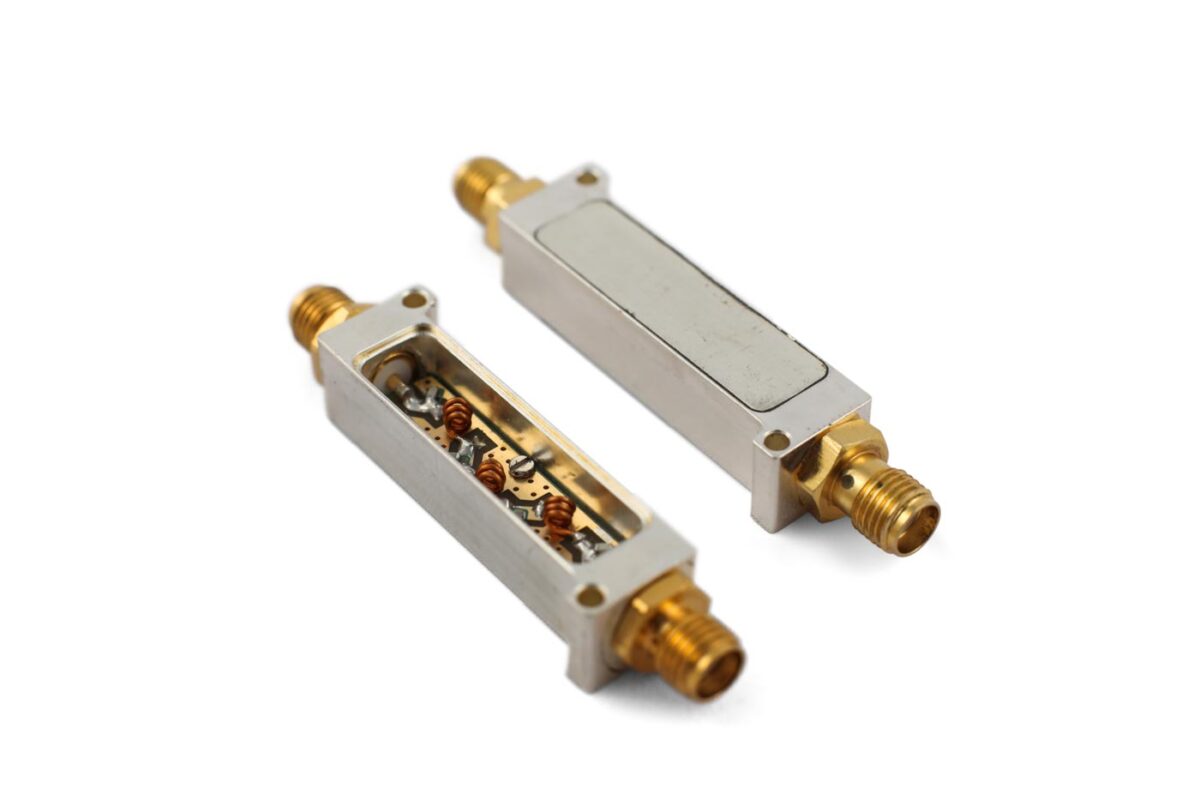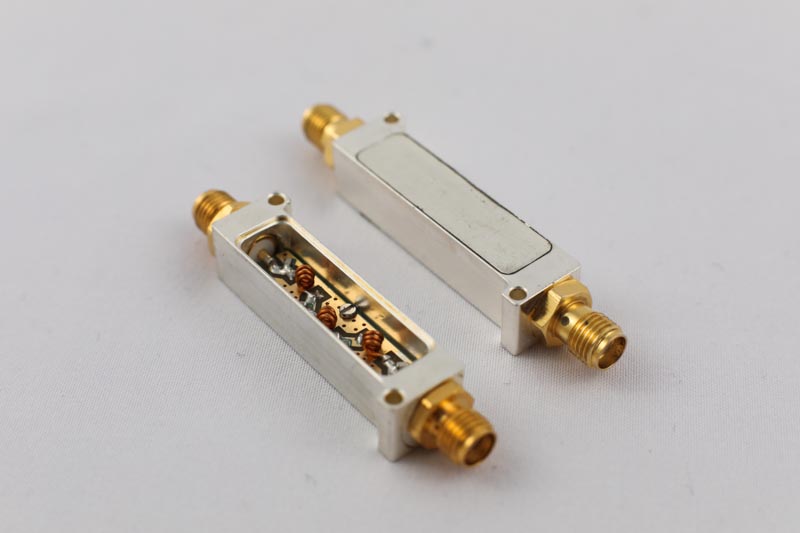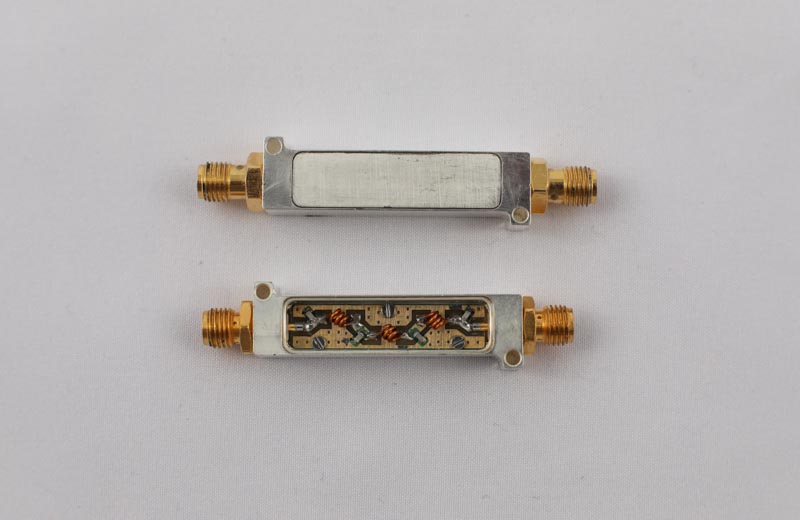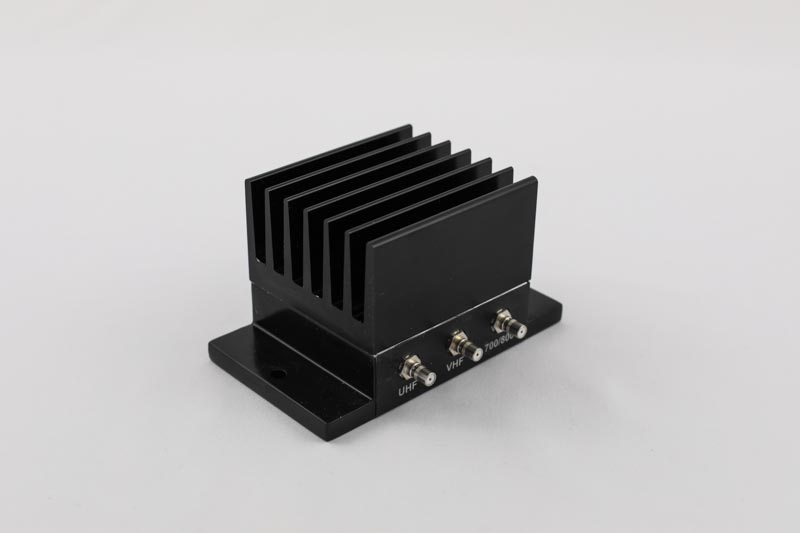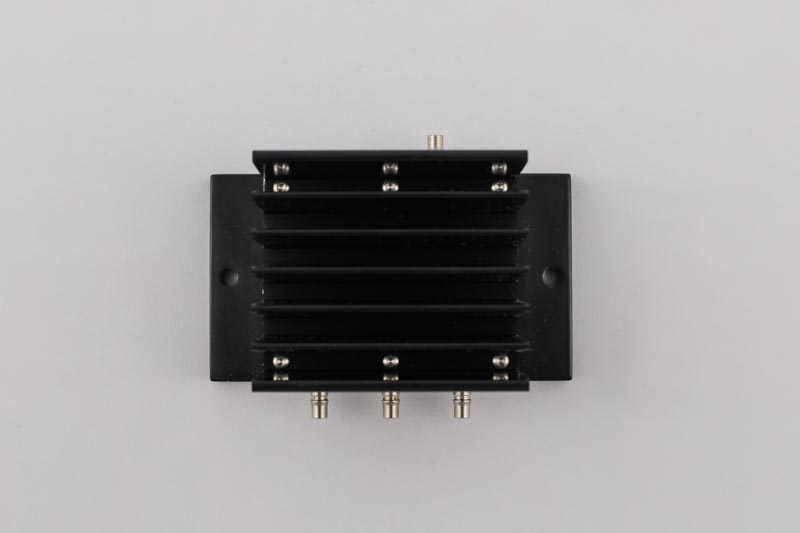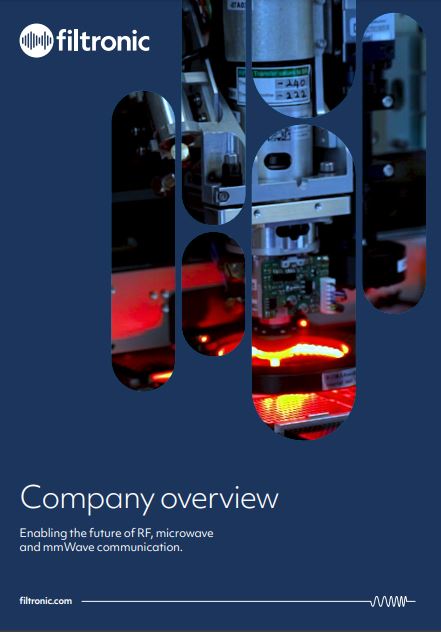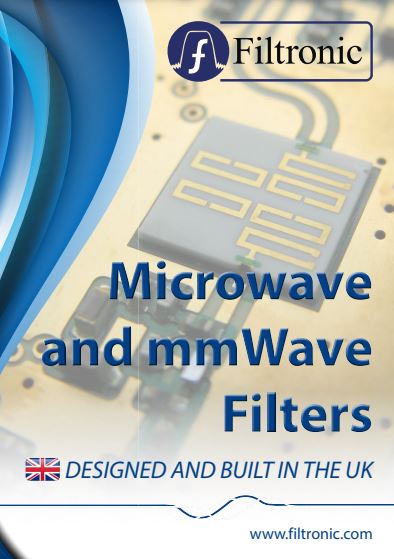Lumped element filters
1MHz-20GHz
Innovative solutions for demanding specifications
Lumped element technology is commonly used in applications where small size is required, especially at lower frequencies where transmission line devices might be excessively large. Both narrowband and broadband designs are available in high pass, low pass, band pass, band stop and multiplexer form.
Lumped element filters are passive filters constructed to meet the specific filtering needs of a particular application using the appropriate number of inductors, capacitors and resistors. Lumped element filters work particularly well with lower frequencies where transmission line devices might be excessively large and for applications where small size is required.
Lumped element filters key facts
- Ideal for moderate to very wide bandwidths
- Versatile topologies and multiple frequency bands
- Perfect for applications where size and weight is important.
- Can be designed for challenging environmental conditions such as high shock and vibration.
Lumped element filters features
- Compact design
- Narrowband and broadband designs are available
- High pass, low pass, band pass, band stop and multiplexer form
- Gain/slope equalizers
Get a quotation or ask a question
Get in touch and a member of our technical sales team will be able to give you a personalised quotation
Product description
We understand filter topology and can work with the perfect technology for each challenge, while offering rapid prototyping and reduced development cycles.
Lumped element technology is commonly used in applications where small size is required, especially at lower frequencies where transmission line devices might be excessively large.
Both narrowband and broadband designs are available in high pass, low pass, band pass, band stop and multiplexer form. Various filter prototypes are used combining capacitive or inductive coupling to produce asymmetric or symmetric responses.
Filtronic pays particular attention to the selection of components and the design of the housing so that parasitic resonances and waveguide modes are suppressed to ensure broad, spurious free stopbands.
Popular news, articles and white papers
- Pushing the boundaries in LEO applications – Filtronic expands presence in satellite communications market
- Filtronic launches into the future, securing a Strategic Partnership with SpaceX for Starlink constellation
- Filtronic cements position in LEO market with a new follow-on contract for Cerus 32
- Filtronic awarded £4.5 million contract with BAE Systems
- Filtronic wins a new radar contract from Defence Prime
- Filtronic releases highest power (>20W), commercially available E-band solid-state power amplifier (SSPA) on the market
- Filtronic strengthens its position within the E-band low Earth orbit market with second-generation Cerus 32 power module
- Filtronic secures $9 Million order to boost SpaceX’s Starlink deployment with advanced E-band SSPAs
- Unveiling the future of E-band
- Filtronic ushers in new leadership era with CEO Nat Edington
- UK RF manufacturer contributes to ‘fibre-in-the-sky’ low Earth orbit network
- Filtronic wins “Manufacturer of the Year” at the prestigious annual Elektra Awards
- Hercules takes off in markets with a need for speed.
- Filtronic win major contract with European Space Agency’s ARTES programme.
- Filtronic secures second ESA project in six months.
- Scaling up semiconductor manufacturing for new-space applications
- A close shave: 5G to the rescue
- RF specialist selected for Defence Technology Exploitation Programme.
- Designing for the future
- The RF spectrum is not infinite – Ensuring RF spectrum sustainability amidst soaring demand

